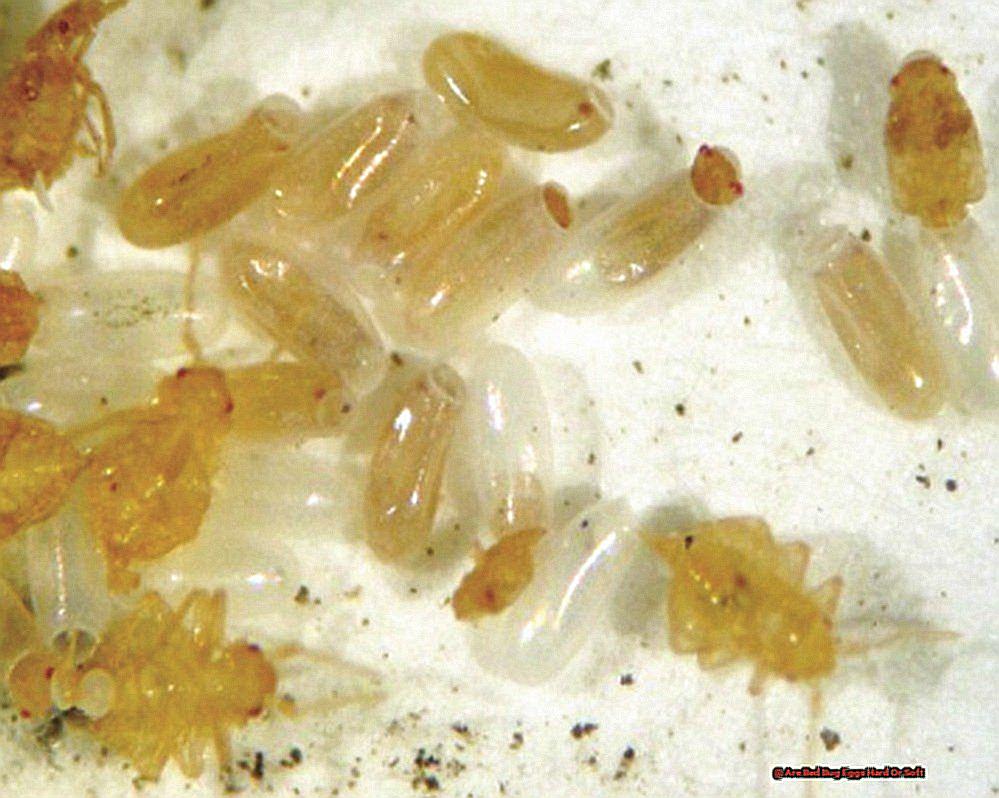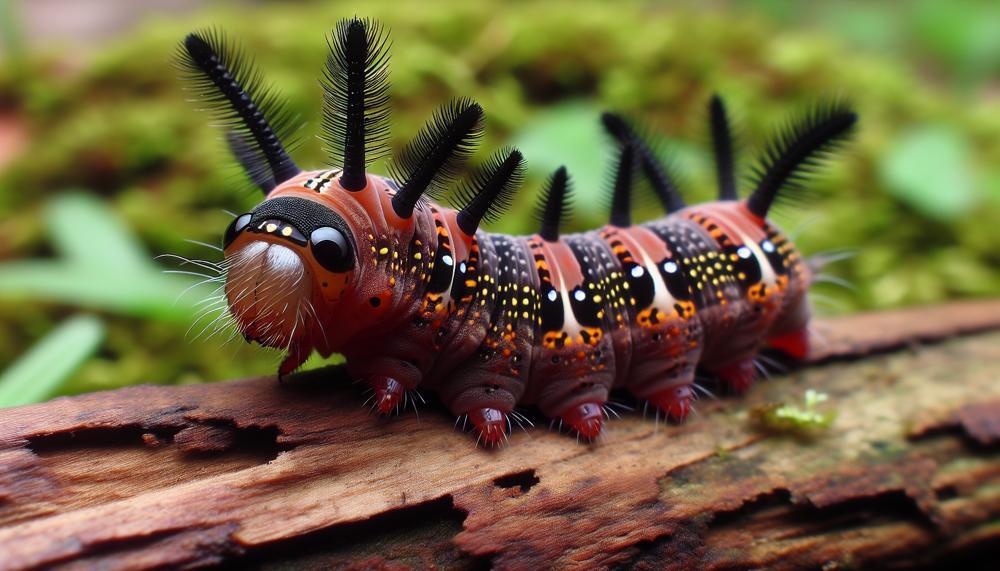Imagine a picturesque garden brimming with vibrant flowers and thriving plants. Now picture this same garden being protected from annoying pests without the use of harsh chemicals. Sounds too good to be true, doesn’t it? Well, prepare to have your mind blown because there are two tiny superheroes that can turn this dream into a reality: lacewings and ladybugs.
These minuscule creatures may appear insignificant at first glance, but don’t let their size deceive you. Lacewings and ladybugs are natural predators of common garden pests like aphids, mites, and scale insects. And the best part? They do all of this without causing any harm to your precious plants or the environment.
But how exactly do these bugs benefit your garden? Let’s delve into the details and uncover why lacewings and ladybugs should be welcomed with open arms into your lush green sanctuary.
Table of Contents
What are Green Lacewings?
In the quest for healthy plants, pesticides may appear to be the only solution against pesky pests. However, there exists a more environmentally-friendly alternative – the green lacewing. These tiny marvels may seem insignificant, but they are powerful predators capable of safeguarding your plants without the use of harmful chemicals.
So, What are Green Lacewings Exactly?
Green lacewings belong to the Chrysopidae family and are commonly found in gardens and greenhouses. Yet, they often play second fiddle to their more renowned counterpart, the ladybug. These delicate insects measure at ½ to ¾ of an inch, boasting long antennae and striking gold or copper eyes. With a wide distribution across continents, they can be spotted almost anywhere except Antarctica.
But What Exactly Do Green Lacewings Do?
Predators by nature, green lacewings feast on a wide variety of soft-bodied insects and their eggs. From aphids to spider mites and thrips, these insects consume them all with ease. Their larvae, in particular, are ferocious and will devour any prey that comes their way, making them a highly effective tool in controlling pest populations.
Yet, Green Lacewings are More Than Just Pest Controllers…
Apart from their role as natural pest control agents, green lacewings also act as pollinators for numerous plant species. This not only benefits pest control but also promotes plant growth and reproduction.
But Why Are They so Beneficial for Plants?
Unlike chemical pesticides that can harm plants, green lacewings pose no threat. On the contrary, their presence offers several benefits for plants:
- Organic pest control: It is a well-known practice to employ green lacewings for pest control in home gardens and greenhouses. With their larvae capable of consuming over 200 pest insects per week, they are a highly effective solution for controlling pest populations.
What Do Green Lacewings Eat?
Green lacewings may seem delicate and unassuming, but do not be fooled by their tiny appearance. These insects are fierce predators when it comes to protecting plants. As someone well-versed in the ways of green lacewings, I am here to reveal the answer to the question on everyone’s mind – what do these little superheroes eat?
Believe it or not, green lacewings have quite a diverse palate and are known for being voracious eaters. Their preferred food of choice is soft-bodied insects, with aphids being at the top of their list. However, they also have a taste for other common pests such as mealybugs, thrips, mites, whiteflies, caterpillars, and leafhoppers. This makes them a valuable asset in any integrated pest management program, providing benefits throughout the entire growing season.
But what sets green lacewings apart from other predators is their unique hunting strategy. Unlike other insects that directly attack their prey, green lacewing larvae use an ambush technique known as “ambush predation.” They blend into their surroundings and patiently wait for unsuspecting prey to come near before swiftly snatching them up with their sharp mandibles.
This method of attack not only makes them efficient hunters but also allows them to conserve energy and avoid potential danger from larger predators. As a result, the population of green lacewings can thrive in gardens and greenhouses, providing continuous pest control without any additional effort from the gardener.
However, the benefits of green lacewings extend beyond just pest control. They also play a crucial role in pollination and act as indicators of a healthy ecosystem. So not only do they benefit your plants, but they also contribute to the overall health of your garden.
Incorporating green lacewings into your pest management strategy is simple. You can purchase them from commercial suppliers or naturally attract them by planting flowers with small nectar-producing flowers such as dill, yarrow, and cosmos.
Green Lacewings in the Garden
In the world of gardening, green lacewings are like the Avengers – not fighting off alien invasions, but rather protecting your plants from pesky pests. These tiny insects may not have flashy powers like Iron Man or Captain America, but they possess a secret weapon that makes them incredible pest control warriors – their insatiable appetite for soft-bodied insects.
But how exactly do these green lacewings help in pest control? Let’s delve into the benefits of having these little superheroes in your garden.
The Versatile Predators
Green lacewings are not picky eaters. They will feast on a variety of soft-bodied pests, including aphids, mealybugs, thrips, mites, whiteflies, caterpillars, and leafhoppers. This makes them a valuable addition to any integrated pest management (IPM) program, providing year-round protection against common garden pests.
The Efficient Larvae
While adult green lacewings feed on nectar and pollen, it’s their larvae that do most of the heavy lifting in pest control. These miniature predators can consume up to 1,000 aphids a day. And they don’t stop there – they also devour other insects and their eggs, making them an effective natural solution for pest control.
A Sustainable Solution
Unlike chemical pesticides that can harm beneficial insects and pollute the environment, green lacewings are a sustainable and eco-friendly solution for pest control. They do not pose any threat to humans, pets, or plants, making them a safe option for organic gardening.
Indicators of a Healthy Ecosystem
Green lacewings are more than just pest controllers – they are also indicators of a healthy ecosystem. Their presence in your garden is a sign of biodiversity and balanced insect populations. By inviting green lacewings into your garden, you are creating a natural and thriving ecosystem.
Conclusion
In conclusion, lacewings and ladybugs may be small in size, but they are mighty in their impact on your garden. These unsung heroes possess incredible powers to protect your plants from pesky pests without the use of harmful chemicals.
With their insatiable appetite for soft-bodied insects, these tiny bugs offer a sustainable and eco-friendly solution for pest control. But their benefits don’t stop there. Lacewings and ladybugs also play a crucial role in pollination and serve as indicators of a healthy ecosystem.
So the next time you spot a green lacewing or ladybug in your garden, don’t underestimate their importance. They are more than just cute little creatures – they are powerful protectors of your precious plants. Let’s give these tiny superheroes the recognition they deserve by incorporating them into our pest management strategies. Your garden will thank you for it.
Remember, lacewings and ladybugs are not just common insects found in gardens – they are unique and essential components of a thriving ecosystem. So instead of relying on artificial pesticides, let’s embrace these natural allies and create a harmonious environment for our plants to thrive in.
Incorporating lacewings and ladybugs into your garden not only benefits your plants but also contributes to the overall health of our planet. By choosing sustainable methods of pest control, we can make a positive impact on the environment while still maintaining beautiful gardens.
So let’s show some love to these tiny yet powerful creatures and welcome them into our gardens with open arms.





